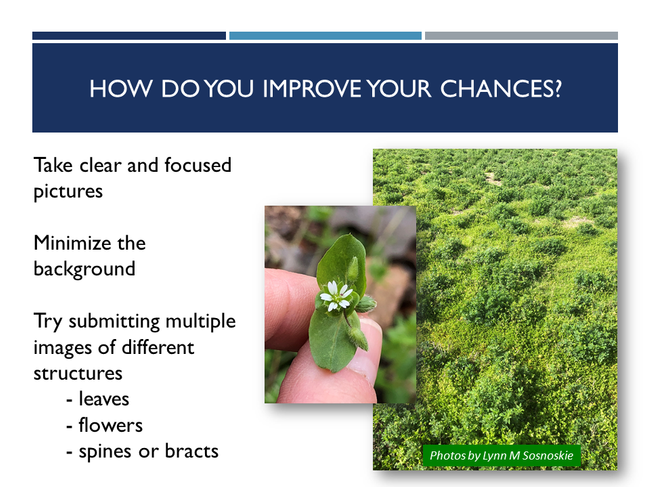The importance of proper weed identification
Weeds are a problem in a variety of systems, from agronomic and horticultural crops, to orchards and vineyards, to turf and ornamentals, to rangelands, and to natural areas. The first step in developing a successful weed management program is to ensure that the unwanted vegetation has been identified correctly. Not all weeds respond equally well to all treatment measures. For example, broadleaf weeds will be managed by the auxinic herbicides (WSSA Group 4) whereas grasses will not. Mowing may be more effective at suppressing upright growing species as opposed to those that are more prostrate. Shallow cultivation may control annual weed species while missing deep-rooted perennials.
In short:
- A successful identification provides you with the knowledge that you need to develop a successful management plan
- Your strategy should based on the sensitivity of a target species to control measures
Weed identification books, phone applications and submitting samples
There are numerous tools available to help you identify weedy species, including guidebooks (Weeds of the West, ISBN-13:0-941570-13-4; Weeds of California and Other Western States, ISBN-13:978-1-879906-69-3) and phone applications (Pl@ntNet https://plantnet.org/en/; iNaturalist https://www.inaturalist.org/).
Local extension advisors can also help with the identification of troublesome species. Identifications can be made either from live specimens or from digital images. If submitting a fresh sample, collect several plants that are representative of the infestation. Collect as much of each individual plant as possible (including roots, flowers and seed pods). Place the samples in a sealed ziploc bag with a few damp paper towels and deliver (or ship) your specimens to your county office (the faster, the better, as fresh samples are easier to identify). Be sure to include your name and contact information, the location of where the weeds were collected (GPS coordinates, address, and description of the habitat (i.e. roadside, orchard, alfalfa field, etc)), as well as any other relevant information.
If emailing digital images, be sure to capture pictures of the plant's leaves, stems, flowers, roots, and seedpods, as well as a photo of the specimen in its environment. Try to remove excess vegetation from around the sample so that its growth habit is apparent. Take photos of any unique structures (such as spines) that could be a diagnostic tool. Include the same contact information (name, address, etc) as listed above in your message.
Remember, it can take several days to determine an ID and some specimens may require confirmation from additional sources, such as the staff at the UC Davis Herbarium.
Figure 1. Strategies to improve weed ID success using digital images.
